Navigating Your First Step Toward Sobriety: Essential Guidance for Alcohol Detox

Embarking on alcohol detox is a critical step in overcoming addiction and reclaiming your health. The process involves safely removing alcohol from your body and managing withdrawal symptoms, which can range from mild discomfort to severe, life-threatening complications. Proper preparation, understanding what to expect, and knowing the resources available can significantly improve your chances of a successful detox and long-term sobriety. This guide provides comprehensive insights into how to prepare physically and mentally, manage symptoms, ensure safety, and access support during this important journey.
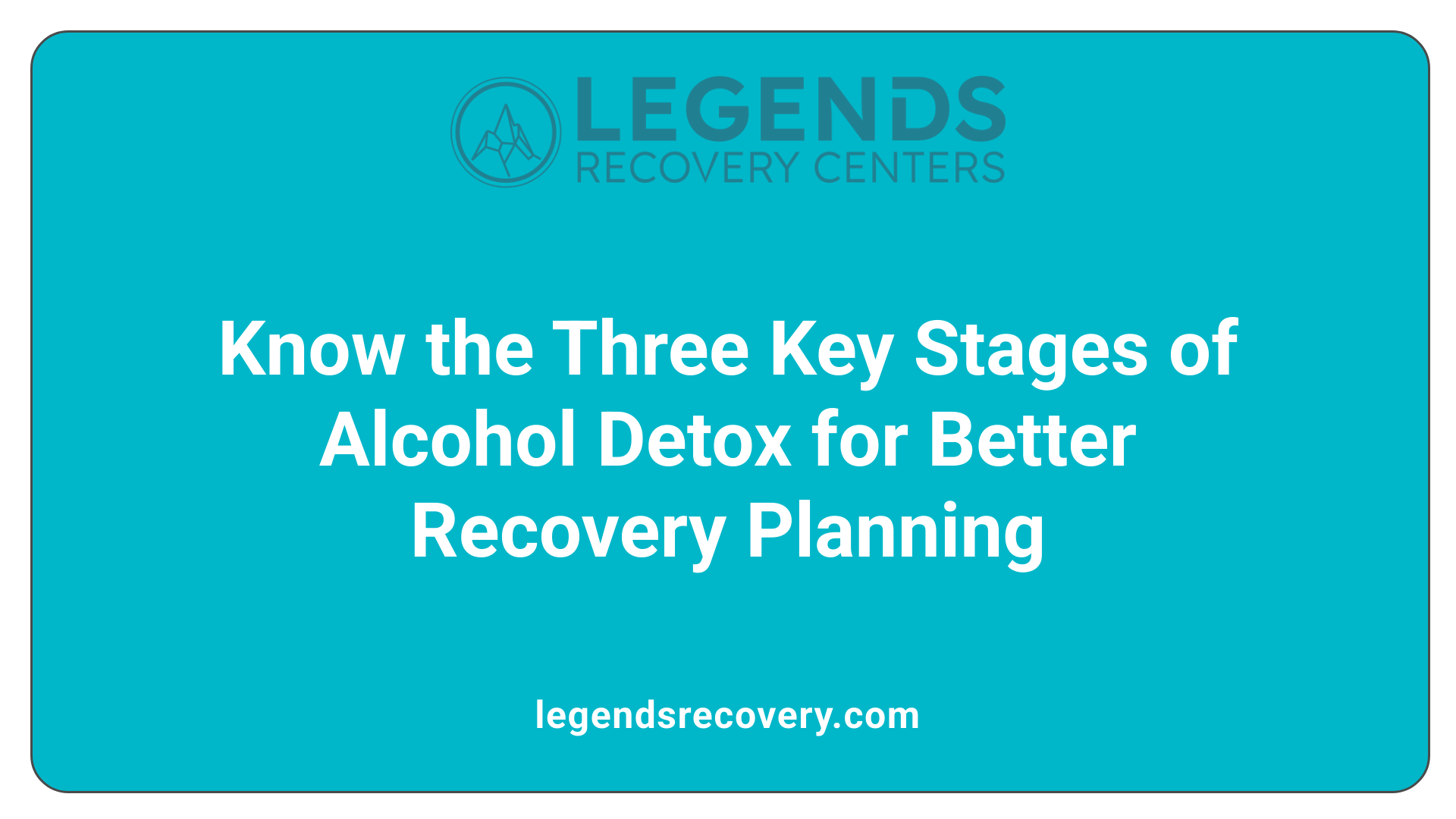
Alcohol detoxification is the process of stopping alcohol intake and allowing the body to clear out alcohol and recover from physical dependence. It is an essential initial step in overcoming alcohol addiction.
This process unfolds in three main phases: the acute withdrawal stage, the post-acute withdrawal stage, and the maintenance phase.
The acute withdrawal stage begins within hours to a few days after the last drink. During this period, individuals often experience physical and emotional symptoms such as anxiety, tremors, nausea, sweating, increased heart rate, hallucinations, seizures, and in severe cases, delirium tremens (DTs). These symptoms usually peak between 24 to 72 hours and can last from a few days up to a week. Proper medical supervision, including medications like benzodiazepines, is critical during this phase to manage symptoms and prevent complications.
Following this period, the post-acute withdrawal stage may last for weeks or even months. The symptoms are milder but can include mood swings, sleep disturbances, irritability, and persistent cravings. Managing this phase often involves therapy, support groups, and lifestyle adjustments to support long-term sobriety.
Finally, the maintenance phase centers on sustaining recovery. This involves adopting healthy routines, ongoing counseling, support group participation, and possibly medication-assisted treatment. The goal here is to prevent relapse and cultivate a sober lifestyle, ensuring that the body and mind fully heal, and new habits are established.
Understanding these stages helps individuals and caregivers prepare for the recovery journey, recognizing the importance of medical supervision and comprehensive support during each phase.
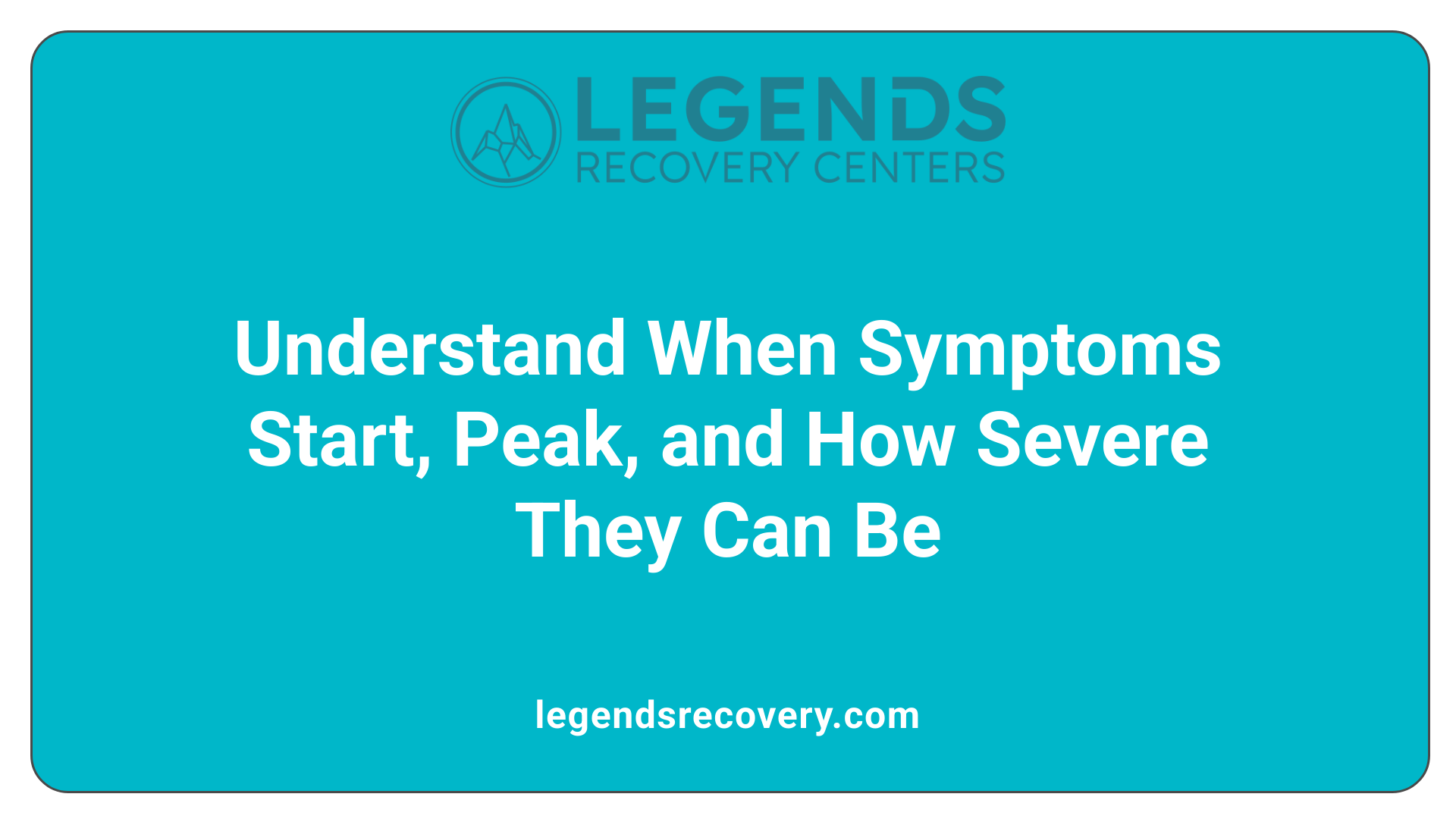
Withdrawal symptoms from alcohol generally begin within 6 to 12 hours after the last drink. Early signs include nausea, sweating, shakiness, and anxiety. These symptoms usually intensify over the next day or two.
Symptoms tend to peak between 24 to 72 hours, with the most intense symptoms occurring during this period. During this peak, individuals can experience heightened anxiety, hallucinations, tremors, and seizures. It's critical to recognize that this is when serious complications are most likely to occur.
Withdrawal can range from mild to life-threatening.
The risk of developing severe symptoms depends on factors like the amount and duration of alcohol use and individual health conditions.
Severe withdrawal complications can quickly become life-threatening.
It is vital to seek professional medical help during withdrawal, especially for those with a history of severe dependence, to manage symptoms safely and prevent serious health risks.
| Timeline of Symptoms | Typical Symptoms | Potential Risks | Notes |
|---|---|---|---|
| 6-12 hours after last drink | Nervousness, headaches, tremors | Early discomfort | Usually mild, manageable with support |
| 24-48 hours | Anxiety, hallucinations, seizures | Serious: seizures, DTs | Close monitoring required |
| 48-72 hours | Peak symptoms, DTs risk | High risk of life-threatening issues | Medical supervision essential |
| Beyond 72 hours | Gradual resolution | Lingering psychological symptoms | Long-term support needed |
Understanding this progression enables better preparedness and timely medical response, greatly reducing risks during alcohol detoxification.
Managing alcohol withdrawal symptoms requires a careful combination of strategies to ensure safety and comfort. First and foremost, staying well-hydrated is essential. Drinking fluids that contain electrolytes, such as sports drinks or oral rehydration solutions, helps replenish lost minerals, prevent dehydration, and reduce symptoms like nausea and dizziness.
Nutrition also plays a vital role during detox. Consuming a variety of nutrient-rich foods—especially fruits, vegetables, whole grains, and lean proteins—supports the body's healing process. These foods supply essential vitamins and minerals, like B vitamins and magnesium, that may become depleted due to heavy drinking.
Support networks provide emotional reassurance during this challenging time. Whether from friends, family, or support groups like Alcoholics Anonymous, having trusted individuals can offer encouragement, help monitor symptoms, and reduce feelings of isolation.
Psychological techniques such as deep breathing exercises, meditation, and mindfulness can help manage anxiety and cravings. Engaging in distraction activities like listening to music, reading, or light hobbies can divert attention away from withdrawal discomfort.
If symptoms are moderate to severe, seeking professional medical supervision is crucial. Healthcare providers can prescribe medications like benzodiazepines to prevent seizures and manage severe symptoms safely. They can also monitor for complications such as delirium tremens, which require immediate medical attention.
Creating a safe and calming environment at home is equally helpful. Removing alcohol and avoiding triggers associated with past drinking reduce the risk of relapse. Avoiding social situations where alcohol is present and steering clear of enablers can make detox more manageable.
In sum, combining medical care, emotional support, healthy behaviors, and a controlled environment provides the best chance for a safe and successful alcohol withdrawal process. It’s always recommended to consult healthcare professionals before starting detox to tailor the approach to individual needs.
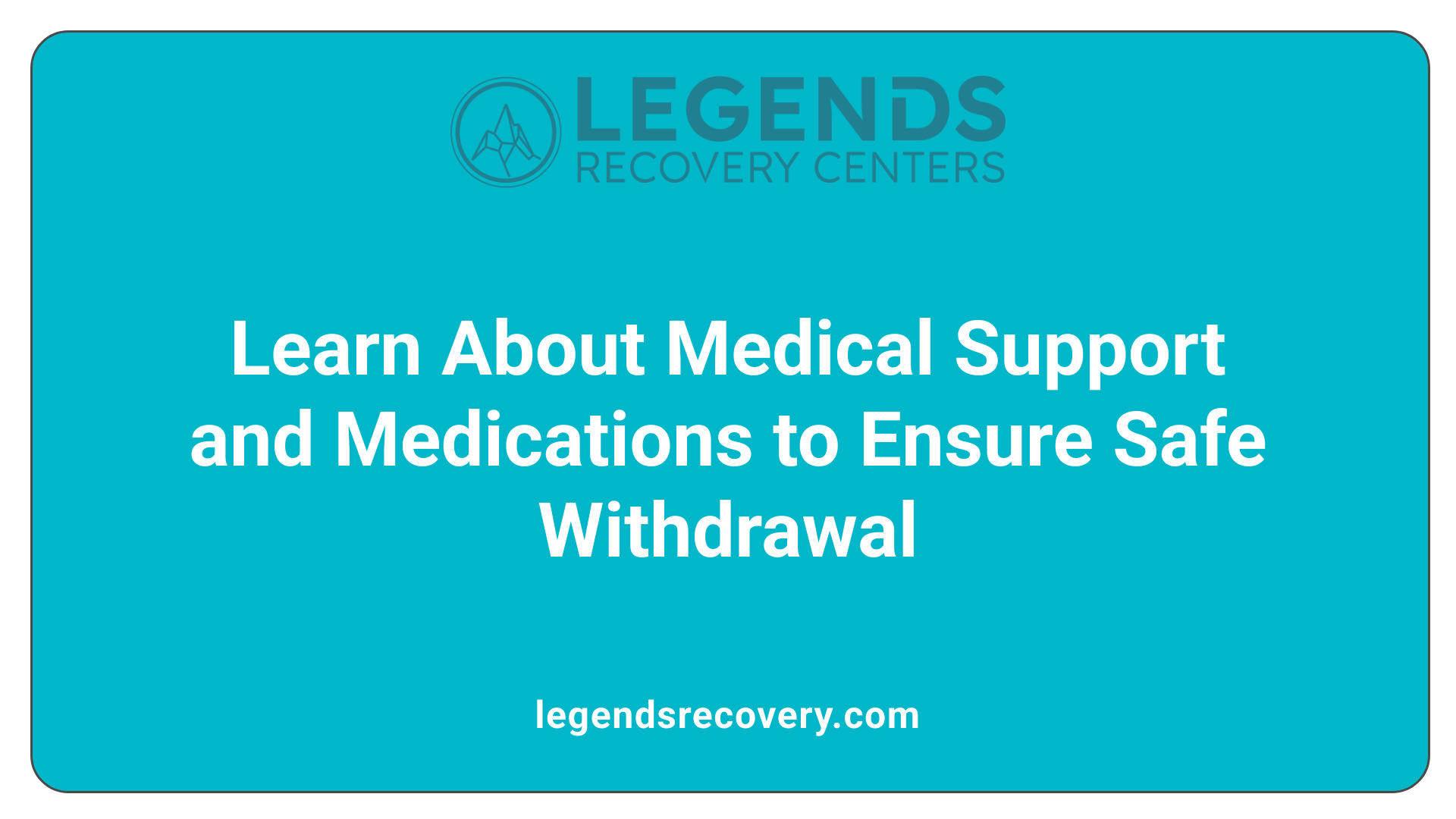 When undergoing alcohol detox, professional medical support is crucial to ensure safety and effectiveness. Hospitalization is often necessary for those with a history of severe withdrawal symptoms, such as seizures or delirium tremens, or for individuals with coexisting health conditions. In inpatient settings, healthcare providers can deliver continuous monitoring, administer medications, and respond immediately to any complications.
When undergoing alcohol detox, professional medical support is crucial to ensure safety and effectiveness. Hospitalization is often necessary for those with a history of severe withdrawal symptoms, such as seizures or delirium tremens, or for individuals with coexisting health conditions. In inpatient settings, healthcare providers can deliver continuous monitoring, administer medications, and respond immediately to any complications.
Medications used during detox play a vital role in managing symptoms and preventing serious health risks. Benzodiazepines, such as chlordiazepoxide (Librium), diazepam (Valium), lorazepam (Ativan), and oxazepam, are commonly prescribed to reduce anxiety, tremors, and seizures. These drugs help stabilize the brain’s activity during withdrawal and are tailored to the severity of symptoms.
Monitoring for complications is a core component of medical detox. Healthcare providers observe for signs of seizures, hallucinations, severe dehydration, or worsening mental status. Continuous assessments ensure prompt intervention if symptoms escalate. This vigilant supervision greatly reduces the risk of life-threatening events like delirium tremens, which can include hallucinations, disorientation, and fluctuating vital signs.
Professional supervision extends beyond medication management. Regular physical examinations, blood tests, and ECGs are performed to evaluate electrolyte levels, liver function, and overall health. Adjustments to treatment are made based on ongoing assessments, ensuring that each patient receives personalized care.
Support resources for detox include counseling, patient education, and follow-up support groups. Medications such as acamprosate, disulfiram, naltrexone, and nalmefene may be prescribed post-detox to prevent relapse and support long-term sobriety. Combining medical treatment with psychological therapies and community support creates a comprehensive approach to overcoming alcohol dependence.
In summary, supervised medical detox involves hospitalization when needed, the use of specific medications to ease withdrawal symptoms, vigilant monitoring for complications, and an integrated support system. This approach maximizes safety and prepares individuals for ongoing recovery efforts.
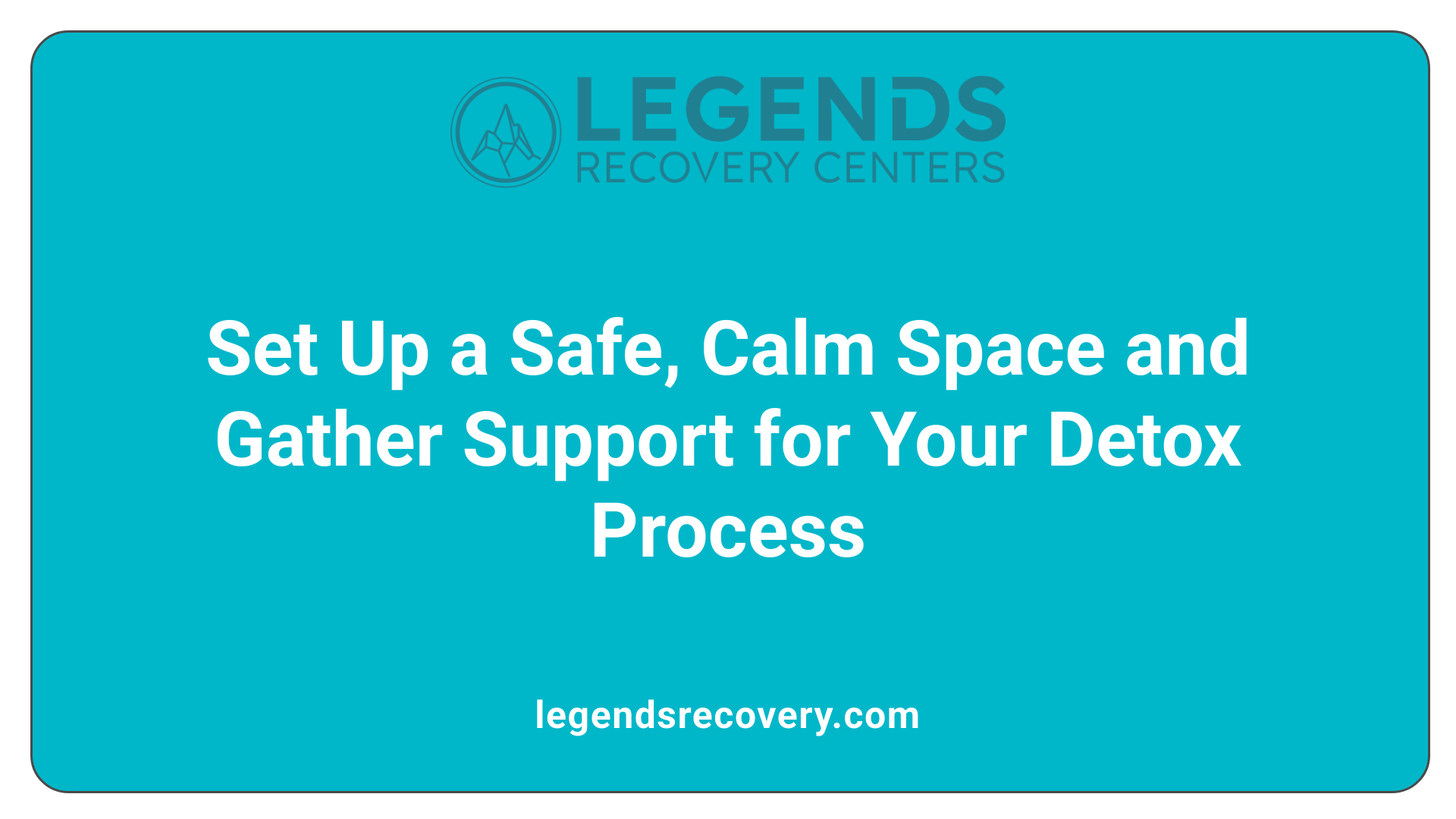 When embarking on alcohol detox, establishing a secure and calming environment is essential for safety and success. One of the first steps is removing all sources of alcohol from the home. This prevents accidental drinking and minimizes triggers that could lead to relapse during vulnerable times.
When embarking on alcohol detox, establishing a secure and calming environment is essential for safety and success. One of the first steps is removing all sources of alcohol from the home. This prevents accidental drinking and minimizes triggers that could lead to relapse during vulnerable times.
Having trusted support persons nearby is crucial. These individuals can assist with daily tasks, monitor for any worsening symptoms, and provide emotional reassurance. It's advisable to inform them about potential withdrawal symptoms and how to respond, especially in urgent situations.
Creating a calming environment at home helps reduce stress and anxiety, which are common during detox. This might include keeping the space quiet, comfortable, and free from stress-inducing stimuli. Gentle activities like listening to soothing music or practicing deep breathing techniques can promote relaxation.
Avoiding triggers associated with past drinking behaviors is vital. Social settings, certain social companions, and stressful situations that remind the individual of drinking should be minimized or avoided altogether during detox. This reduces the risk of cravings and emotional upheavals.
The safety of detoxing from alcohol hinges on medical supervision because severe withdrawal symptoms such as seizures and delirium tremens can pose life-threatening risks. It’s important to undergo detox under the guidance of healthcare professionals, especially for heavy or chronic drinkers.
Medical assessment helps determine the level of dependence and guides the treatment plan. Using scales like the CIWA-Ar (Clinical Institute Withdrawal Assessment for Alcohol) allows healthcare providers to monitor symptom severity and administer medications like benzodiazepines if necessary. These medications can prevent complications like seizures and reduce withdrawal discomfort.
Supportive care also involves vitamin and electrolyte replenishment, notably thiamine, to prevent Wernicke's encephalopathy—a serious neurological condition linked to alcohol withdrawal.
Throughout detox, close monitoring for symptoms such as tremors, hallucinations, or seizures is essential. Early detection and intervention help prevent escalation to critical conditions. Severe withdrawal cases often require inpatient care with continuous medical supervision.
In summary, safety during alcohol detox depends on removing alcohol from the environment, having the right support system, creating a peaceful atmosphere, and most importantly, working with medical professionals to manage symptoms and minimize risks. Being prepared and informed ensures a safer, more effective detox process.
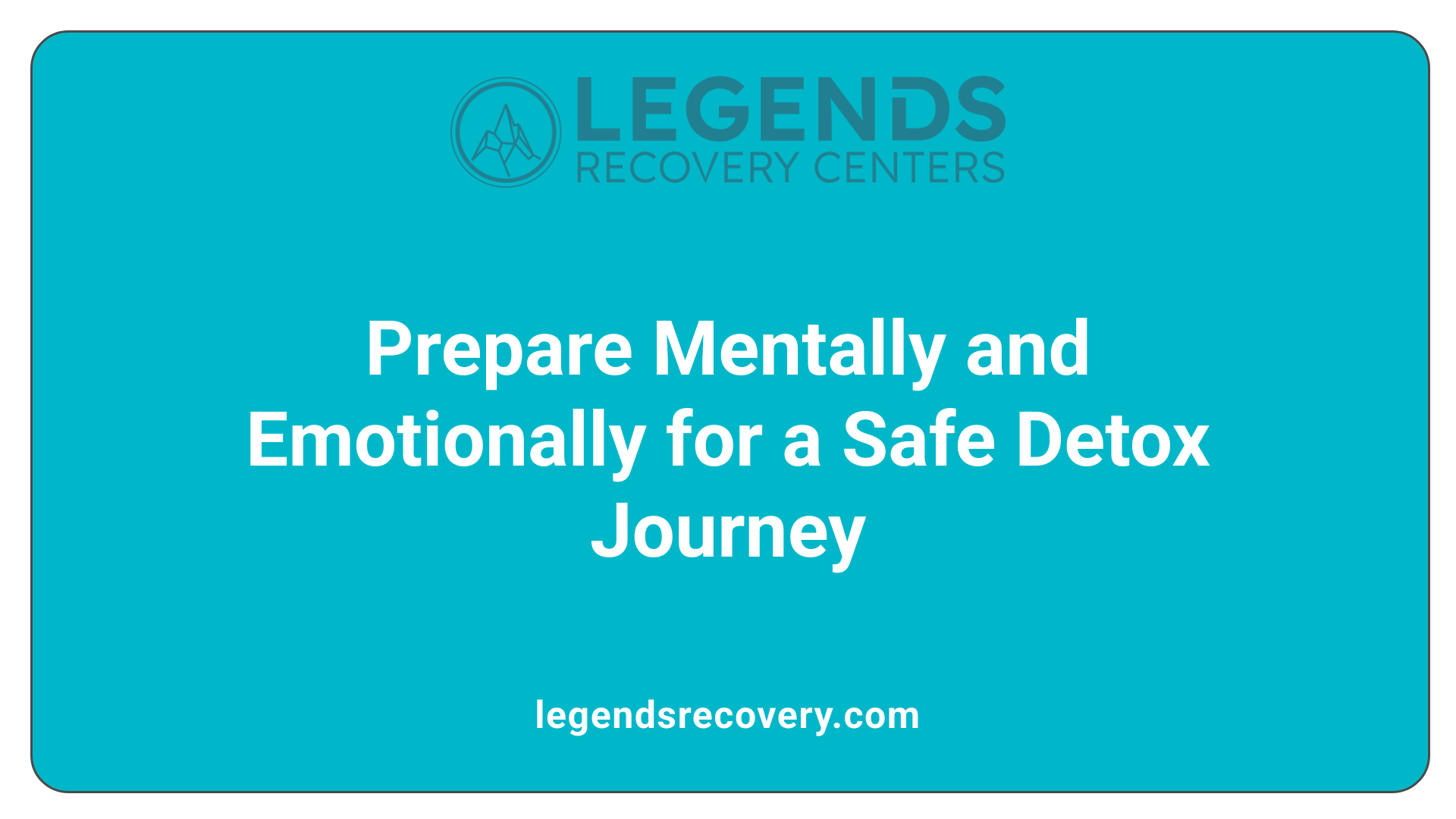
Preparing for alcohol detox requires both physical readiness and mental clarity. It begins with consulting your healthcare provider, who can create a tailored detox plan that ensures your safety throughout the process. Being honest about your drinking habits, health issues, and any previous detox experiences helps your medical team provide the appropriate care.
Creating a supportive environment is essential. Remove all alcohol and related substances from your home to reduce temptations. Inform trusted friends or family members about your decision to detox and arrange for them to be available during this time. Having someone you trust can provide emotional support and help respond to any emergencies.
Physically, staying well-hydrated by drinking plenty of water and consuming carbohydrate-rich foods such as fruits, whole grains, and starchy vegetables can help mitigate withdrawal symptoms like nausea and irritability. Eating balanced meals supports your body's healing process and stabilizes blood sugar levels.
Mentally, it’s important to recognize potential symptoms of severe withdrawal, including hallucinations or seizures, which require immediate medical attention. Being prepared to seek emergency care if these signs appear is critical. Support groups, ongoing therapy, and follow-up medical care also play a vital role in long-term sobriety.
By combining medical guidance with emotional support, you can approach detox more confidently, reducing the risks and paving the way for successful recovery.
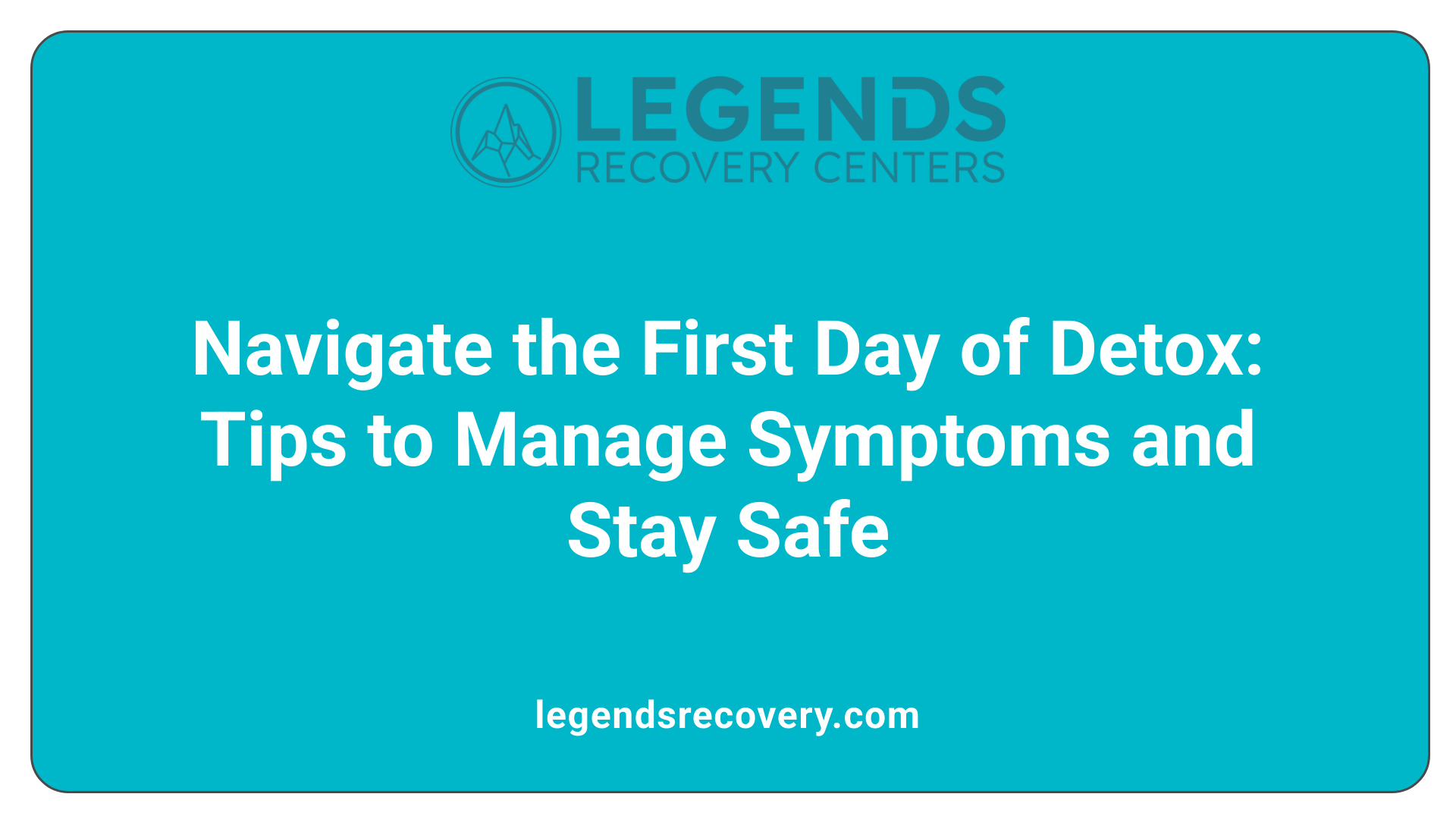
The first day of alcohol detox can be challenging as your body begins to adjust to the absence of alcohol. During the initial 6 to 12 hours, mild withdrawal symptoms such as headaches, sweating, nausea, and shaky hands are common. As time progresses, the symptoms may intensify, with some individuals experiencing increased heart rate, high blood pressure, and anxiety.
By the 24-hour mark, symptoms like tremors, insomnia, and irritability often become more pronounced. Some people may also notice hallucinations, which can be visual or auditory, starting around this time. It's essential to recognize that these symptoms can vary based on the extent of alcohol use and individual health factors.
Anxiety is a common emotional challenge during detox, often heightened by physical discomfort and the emotional toll of withdrawal. Deep breathing exercises, meditation, and staying physically active within one's limits can help reduce anxiety levels.
Creating a calm, relaxing environment at home can make a significant difference. Avoiding loud noises, bright lights, and stressful situations helps in managing emotional upheaval. Support from loved ones or healthcare providers during this time can also provide reassurance and guidance.
While mild symptoms might be manageable at home, having support is crucial. Trusted friends or family members should be present to monitor your condition and assist if symptoms worsen. In high-risk cases, especially if there is a history of severe withdrawal symptoms, medical supervision in a detox center is recommended.
Support includes keeping hydrated, eating carbohydrate-rich snacks to stabilize blood sugar, and avoiding triggers that might tempt you to drink. Support lines such as Canada’s Talk Suicide Canada or Kids Help Phone are available 24/7 for emotional assistance.
During the first 24 hours, you may notice symptoms gradually peaking, with some discomfort but no severe complications yet. However, it’s vital to be alert to signs of worsening condition, such as hallucinations, seizures, or severe agitation—these require immediate medical attention.
Most symptoms tend to reach their highest point around 24 to 48 hours and will typically start to wane after this period. Throughout this stage, medical care, medications like benzodiazepines, and continuous monitoring help ensure safety.
Being prepared for these early challenges and seeking professional help when needed can significantly improve recovery outcomes and reduce risks associated with alcohol withdrawal.
The journey through alcohol detox is a vital first step toward reclaiming your health and stability. Adequate preparation, awareness of the symptoms and their timeline, and access to professional medical support can make the process safer and more manageable. Creating a supportive environment at home, enlisting the help of trusted individuals, and understanding the importance of follow-up treatment are crucial for sustaining sobriety. Remember, recovery is a gradual process that extends beyond detox, involving ongoing therapy, support groups, and lifestyle changes. Embrace this transition with patience and determination, knowing that with the right support and resources, you can successfully navigate the challenges of detox and build a healthier, sober future.